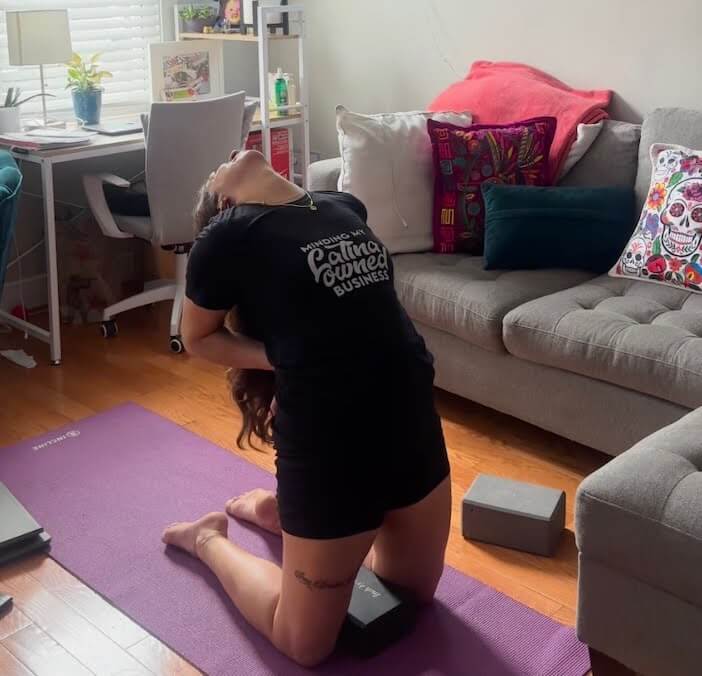A 7-minute read
Dopefam, let’s talk about something that can hit any of us at any time – injuries. 😫
You’re cruising along, crushing your workouts, feeling like a total beast, and then BAM! 💥 Out of nowhere, your knee starts acting up, or your shoulder decides it’s had enough.
Suddenly, you’re sidelined, frustrated, and wondering if all your hard work is about to go down the drain.
But hold up! Before you throw in the towel, I’ve got some real talk for you. Injuries might slow you down, but they don’t have to stop you completely. In fact, with the right mindset and strategies, training through injuries lets you come out the other side stronger than ever.
Today, we’re diving into how to keep your fitness journey on track when injury strikes. Trust me, you’re gonna want to bookmark this one!
Why Staying on Track Matters
Look, injuries are about as common in fitness as protein shakes. They happen to everyone, from newbies to pro athletes. But here’s the thing – how you handle that injury can make or break your fitness journey.
Let’s be real: fitness isn’t a sprint, it’s a marathon. We’re in this for the long haul, for our health, our confidence, our quality of life. Consistency is key, and an injury doesn’t have to derail that consistency.1
Plus, training through injuries and working out other parts of your body or taking a step back for yoga, stretching, and rehabilitation isn’t just good for your physical health—it’s crucial for your mental game, too. You’re still making progress somewhere, and that progress keeps you motivated and in the habit of prioritizing your health.

My Own Battle with Injury (And Train Through Injury)
Alright, story time. A few years back, I was in beast mode, training hard for a bodybuilding competition. I was feeling unstoppable, you know? But then, during a heavy leg day, I felt this sharp pain in my lower back. 😖
At first, I tried to push through it (terrible idea, by the way). But soon, I couldn’t even tie my own shoes without wincing. I was frustrated, angry, and honestly, a little scared. Would I lose all my gains? Would I have to drop out of the competition?
But then I remembered something my old coach used to say: “The only bad workout is the one that didn’t happen.” So, I decided to shift my focus. I couldn’t squat or deadlift, but I sure as hell could work on my flexibility and core strength through yoga and stretching!
Long story short, not only did I maintain most of my muscle mass, but I also discovered some imbalances in my training that I was able to correct. By the time I was cleared to train legs again, I came back stronger and with better form than ever.

Broken but Not Beaten: Strategies for Thriving Despite Training Injuries
Find a Different Part of the Body to Maintain Training Through the Injuries
This is your new mantra: “Can’t train this? Train that!“2 💪
The key here is to maintain your workout habits and effort. Just because one part of your body is out of commission doesn’t mean the rest of you has to be!
Got knee pain? Time to focus on that upper body and core. Shoulder acting up? Let’s get those legs burning and find some cardio alternatives. Back injury? There are tons of physical therapy-approved exercises and gentle yoga moves you can do.
For example, when I had my back injury, I dove deep into therapeutic stretches and yoga. I’m talking cat-cow poses, gentle twists, and child’s pose –
you name it. Not only did I maintain my flexibility, but I also improved my body awareness and core strength, which paid off big time when I got back to regular training.
The best part? These yoga sessions weren’t just about physical recovery. They also gave me a mental reset, helping me stay positive and focused during a frustrating time.
By the time I was cleared to hit the weights again, I felt more in tune with my body than ever before. The increased flexibility and core strength from yoga actually improved my lifting form.
Use the Time to Address Weaknesses
Here’s a truth bomb for ya: injuries often happen because of imbalances or weaknesses in our body. So why not use this time to fix those issues and do optimal training through your injuries?
This is your chance to focus on those areas you usually neglect. Flexibility work, balance training, or even just perfecting your form on basic movements can make a huge difference.
During my back injury recovery, I realized my core strength wasn’t where it needed to be. So, I made core work a priority. By the time I was back to full training, my improved core strength actually helped me lift heavier and with better form than before the injury. Maintain a Positive Mindset and Set New Goals
I get it – being injured sucks. But your mindset can make or break your recovery.
Instead of seeing this as a setback, look at it as an opportunity to learn about your body, address weaknesses, and come back stronger.
Set recovery-focused goals and celebrate those small wins. Maybe it’s increasing your range of motion by a few degrees or holding a plank for 10 seconds longer. Every bit of progress counts!
And hey, this could be a perfect time for a slight de-load. Sometimes, our bodies need a break from the heavy lifting to come back even stronger.
For example, when I had my back injury, I dove deep into therapeutic stretches and yoga. I’m talking cat-cow poses, gentle twists, and child’s pose – you name it. Not only did I maintain my flexibility, but I also improved my body awareness and core strength, which paid off big time when I got back to regular training.
The best part? These yoga sessions weren’t just about physical recovery. They also gave me a mental reset, helping me stay positive and focused during a frustrating time. Plus, the mindfulness I developed on the mat started seeping into other areas of my life, making me a more centered and resilient person overall.
By the time I was cleared to hit the weights again, I felt more in tune with my body than ever before. The increased flexibility and core strength from yoga actually improved my form.
Your Action Plan to Training Through Injuries
Alright, Dopefam, it’s time to put this knowledge into action:
– If you’re healthy, keep training hard! But also, take time to address any niggles or weaknesses before they turn into full-blown injuries.
– If you’re dealing with an injury, don’t give up! Apply these strategies and find a way to move some part of your body safely.
– Got some injury hacks of your own? Drop ’em in the comments or hit me up on social media. We’re all in this together!
– And remember, always consult with healthcare professionals for personalized injury advice. What works for one person might not work for another.
Wrapping It Up
Let’s recap our strategies for dealing with training injuries:
1. Find a different part of the body to work out
2. Use the time to address weaknesses
3. Maintain a positive mindset and set new goals

Remember, the key is to maintain your habits by staying positive and finding ways to work around your injury. It’s not about pushing through pain – it’s about adapting and overcoming so you can train through injuries.
By facing this challenge head-on, you’re not just maintaining your fitness – you’re becoming a more well-rounded and resilient athlete. And trust me, that resilience will serve you well in all areas of life.
So next time injury tries to knock you down, you know what to do. Stand back up, adjust your plan, and keep moving forward. Because that’s what dope people do. 😎
Stay strong, stay adaptable… Stay DOPE!
Relevant Readings:
- How to Eat More & Still Lose Weight [Infographic on Calorie-Dense Foods]
- How to Rest and Recover: The 3 Pillars: Sleep, Hydration, Nutrition + BONUS: Active Recovery Ideas
- Motivate Your Weight Loss Journey with a Fun Perspective Twist [16 Examples!]
- 5-Simple Steps to Weight Loss that You can Start TODAY [Actionable List]

Leave a Reply
You must be logged in to post a comment.